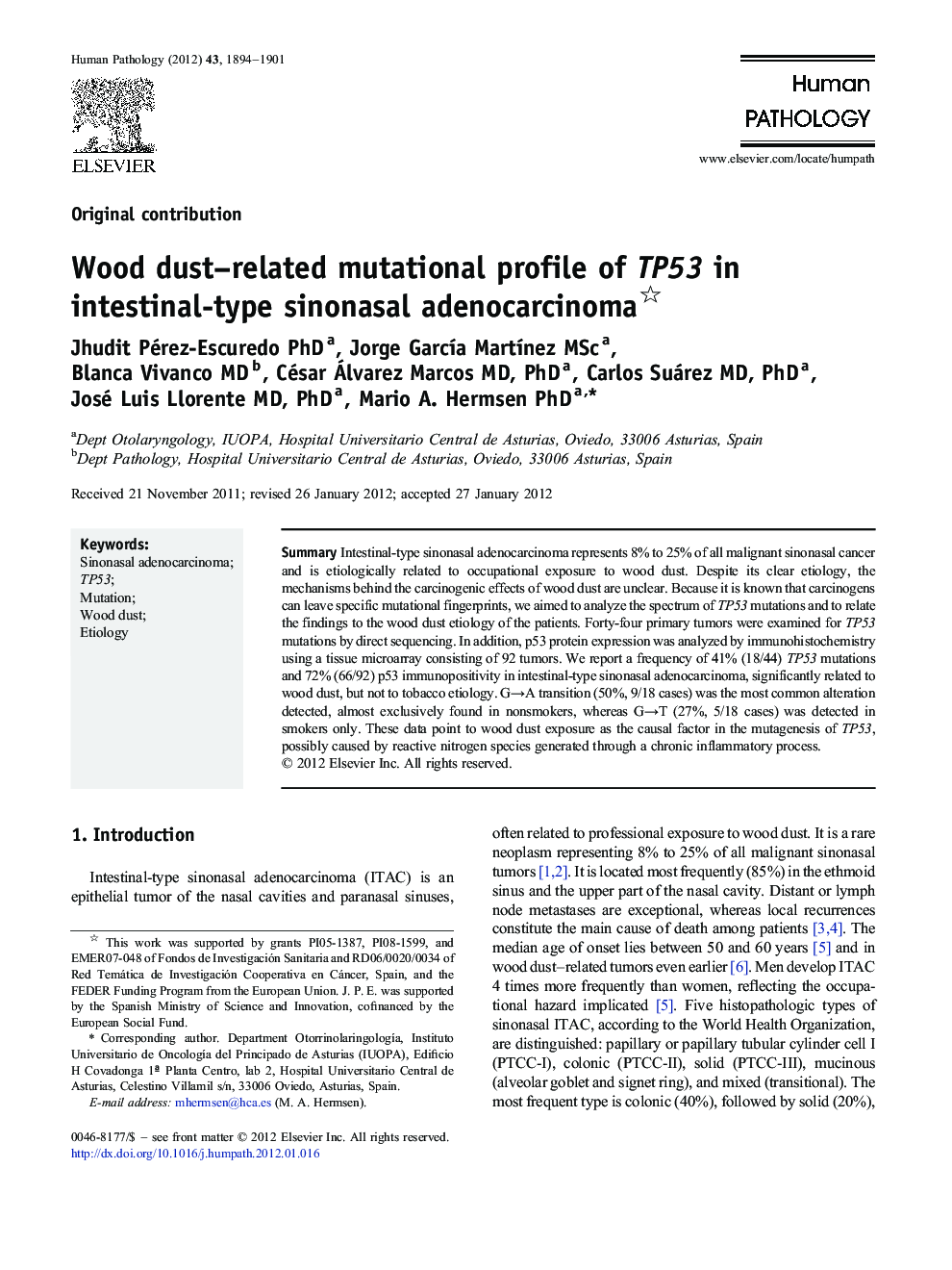| Article ID | Journal | Published Year | Pages | File Type |
|---|---|---|---|---|
| 6216168 | Human Pathology | 2012 | 8 Pages |
SummaryIntestinal-type sinonasal adenocarcinoma represents 8% to 25% of all malignant sinonasal cancer and is etiologically related to occupational exposure to wood dust. Despite its clear etiology, the mechanisms behind the carcinogenic effects of wood dust are unclear. Because it is known that carcinogens can leave specific mutational fingerprints, we aimed to analyze the spectrum of TP53 mutations and to relate the findings to the wood dust etiology of the patients. Forty-four primary tumors were examined for TP53 mutations by direct sequencing. In addition, p53 protein expression was analyzed by immunohistochemistry using a tissue microarray consisting of 92 tumors. We report a frequency of 41% (18/44) TP53 mutations and 72% (66/92) p53 immunopositivity in intestinal-type sinonasal adenocarcinoma, significantly related to wood dust, but not to tobacco etiology. GâA transition (50%, 9/18 cases) was the most common alteration detected, almost exclusively found in nonsmokers, whereas GâT (27%, 5/18 cases) was detected in smokers only. These data point to wood dust exposure as the causal factor in the mutagenesis of TP53, possibly caused by reactive nitrogen species generated through a chronic inflammatory process.
